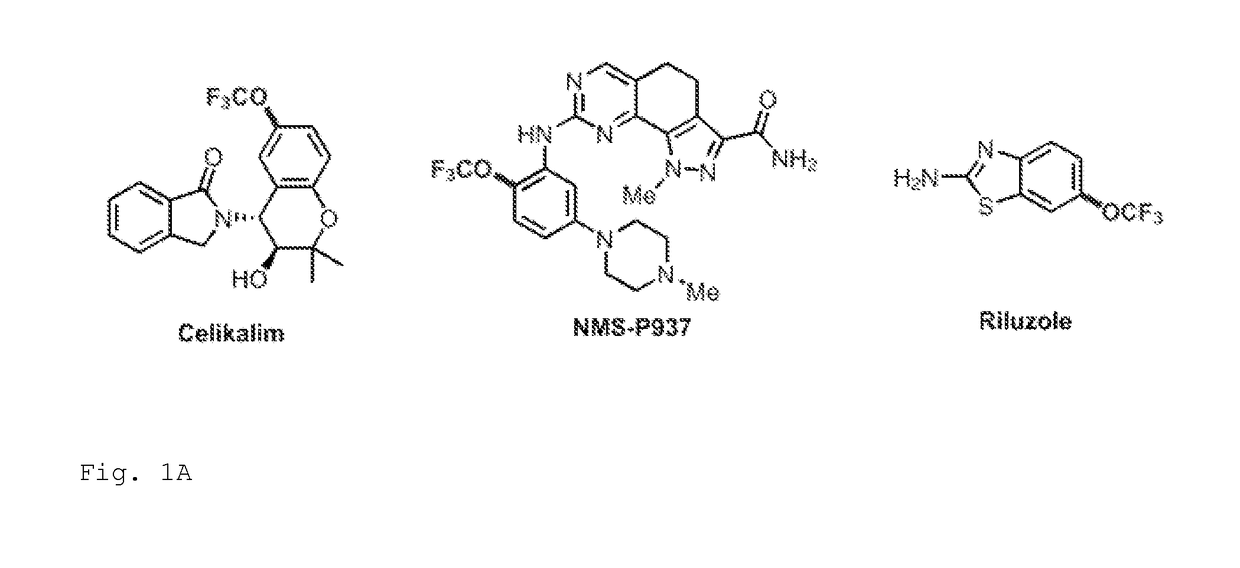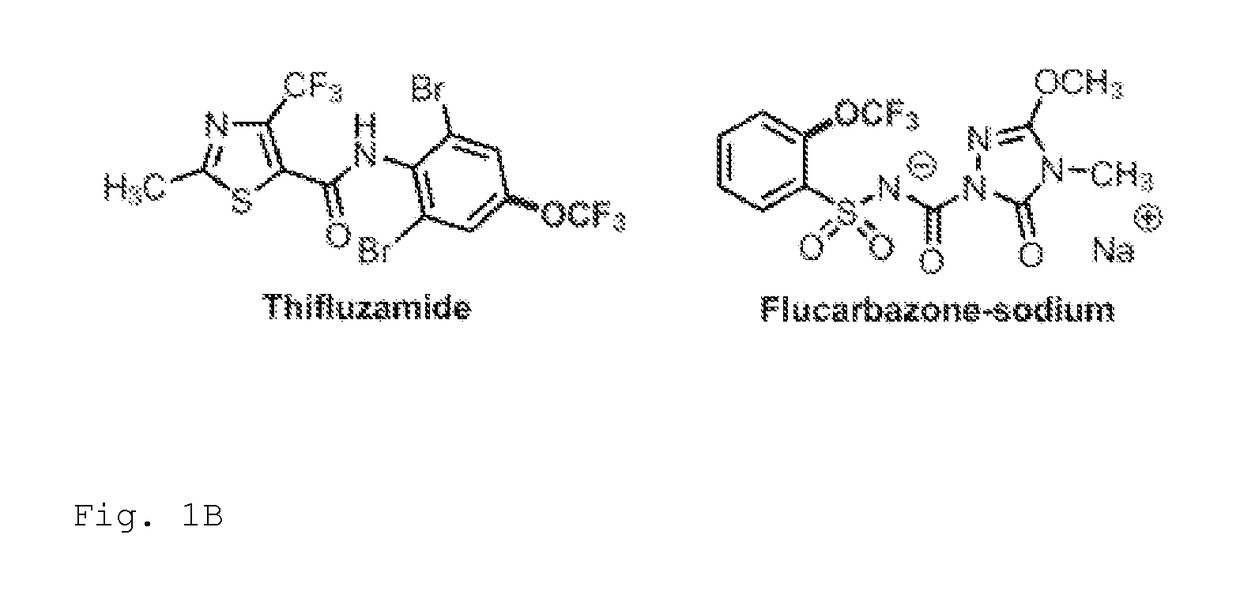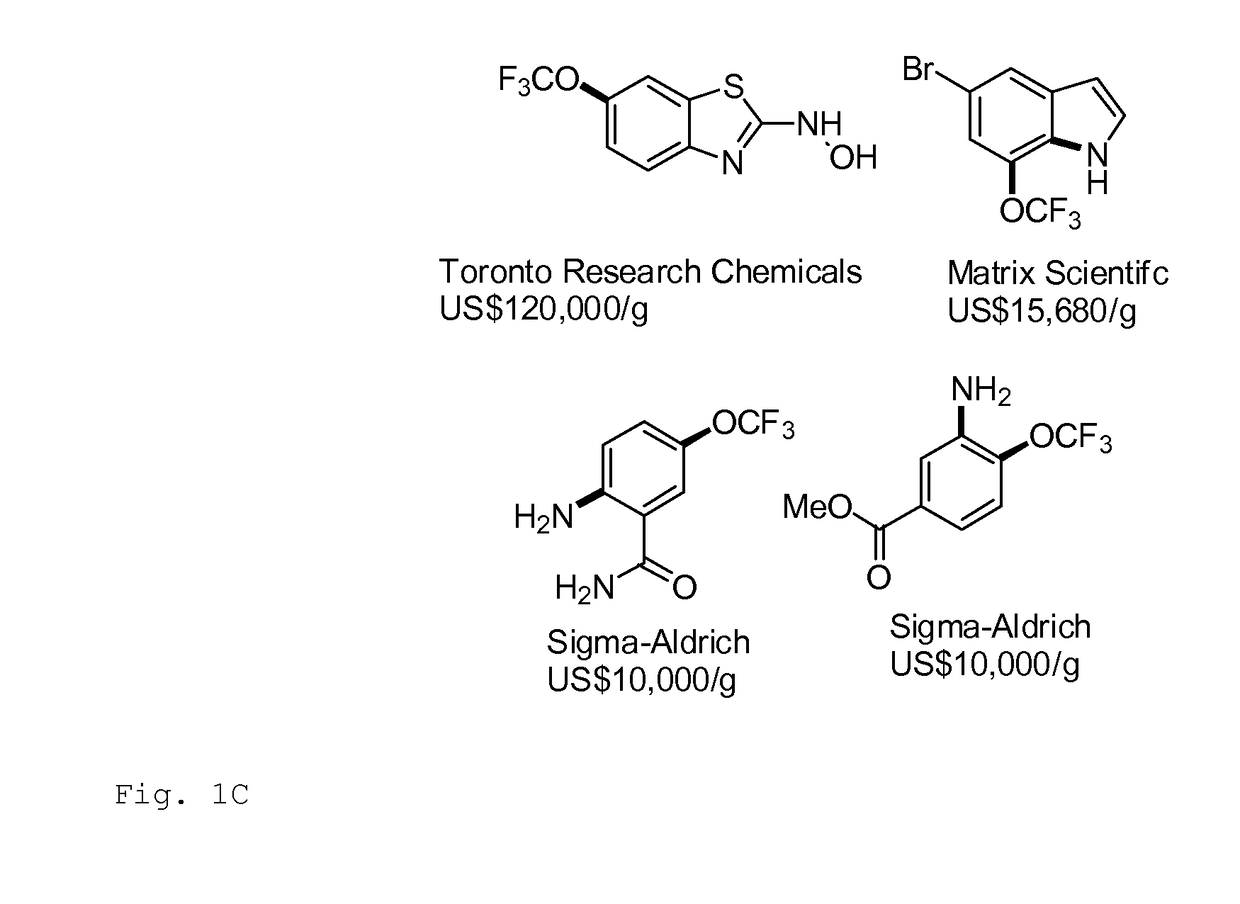Trifluoromethoxylation of arenes via intramolecular trifluoromethoxy group migration
a trifluoromethoxy group and trifluoromethoxy technology, applied in the preparation of carbamic acid derivatives, carboxylic acid amides, organic chemistry, etc., can solve the problems of poor substrate scope or require the use of highly toxic and/or thermally unstable reagents, and the inability to fully integrate the functional group into the organic molecule. , to achieve the effect of improving the yield of phenolic substrates, and improving the yield
- Summary
- Abstract
- Description
- Claims
- Application Information
AI Technical Summary
Benefits of technology
Problems solved by technology
Method used
Image
Examples
example 1
General Method for O-trifluoromethylation / OCF3-migration
[0359]Herein is described the first synthesis, isolation, and characterization of protected N-aryl-N-(trifluoromethoxy)amines and their application in the synthesis of ortho-OCF3 aniline derivatives (Scheme 1).
[0360]Standard procedure for O-trifluoromethylation of protected N-aryl-N-hydroxylamines
[0361]Under N2 atmosphere, to a mixture of protected N-aryl-N-hydroxylamine (1.00 equiv) and Cs2CO3 (10 mol %) in CHCl3 (0.100 M) was added Togni reagent II (1.20 equiv) and the reaction mixture was stirred at rt for 14-23 h. The reaction mixture was then washed with sat. aq. NaHCO3* and the organic layer was collected, dried (MgSO4), filtered, and concentrated in vacuo. The residue was purified by chromatography on silica gel. *The wash with sat. aq. NaHCO3 was not necessary in case of compounds of low polarity, which could be easily separated from 2-iodobenzoic acid by means column chromatography.
[0362]Standard Procedure for the Synt...
example 2
Synthesis of N-OCF3 Compounds
[0364]Although synthesis and applications of N—SCF3 compounds are known,[15] direct synthesis of the analogous N—OCF3 compounds from protected N-aryl-N-hydroxylamines has not been reported.[14] It is known that sodium 2,6,6-tetramethylpiperidin-1-oxide (TEMPONa) reacts with 1-trifluoromethyl-1,2-benziodoxol-3(1H)-one (Togni reagent II)[16] to form TEMPO-CF3.[17] Based on this reactivity, Togni and co-workers developed O-trifluoromethylation of N,N-dialkylhydroxylamines using 3,3-Dimethyl-1-(trifluoromethyl)-1,2-benziodoxole (Togni reagent I).[14b] Therefore, it was envisioned that protected N-aryl-N-hydroxylamines could react with Togni reagents to provide the desired products of O-trifluoromethylation. Indeed, treatment of N-phenyl-N-hydroxamic acid (1a) with 1.2 equiv of Togni reagent II in the presence of 10 mol % Cs2CO3 in CHCl3 (0.1 M) at room temperature furnished the desired product 2a in 72% yield (Scheme 2). Addition of a stoichiometric amount o...
example 3
OCF3 Migration
[0406]With the protected N-aryl-N-(trifluoromethoxy)amines (2a-2t) in hand, attention was directed to examining the OCF3-migration reaction. Systematic variation of different reaction parameters, including solvent, concentration, and temperature, identified optimal reaction conditions. A significant degree of structural and electronic variation on the aryl ring was tolerated (Scheme 3). Products derived from electron-rich (3m) and electron-poor (3b-3l, 3n-3t) aniline derivatives were formed in high yields, though electron-poor aniline derivatives with exception of 3p required higher reaction temperatures for full conversion. Notably, halogen functionalities, in particular Br and I, remained intact after reaction (3e-3j, 3o, 3p). These groups provide easy handles for further synthetic elaborations. Other functional groups including ester (3n, 3q-3t), nitrile (3b), ketone (3c), ether (3k, 3m), heterocycle (3p) and multiple substitution on arene (3k, 3o, 3p) were well tol...
PUM
| Property | Measurement | Unit |
|---|---|---|
| Structure | aaaaa | aaaaa |
Abstract
Description
Claims
Application Information
 Login to View More
Login to View More - R&D
- Intellectual Property
- Life Sciences
- Materials
- Tech Scout
- Unparalleled Data Quality
- Higher Quality Content
- 60% Fewer Hallucinations
Browse by: Latest US Patents, China's latest patents, Technical Efficacy Thesaurus, Application Domain, Technology Topic, Popular Technical Reports.
© 2025 PatSnap. All rights reserved.Legal|Privacy policy|Modern Slavery Act Transparency Statement|Sitemap|About US| Contact US: help@patsnap.com



